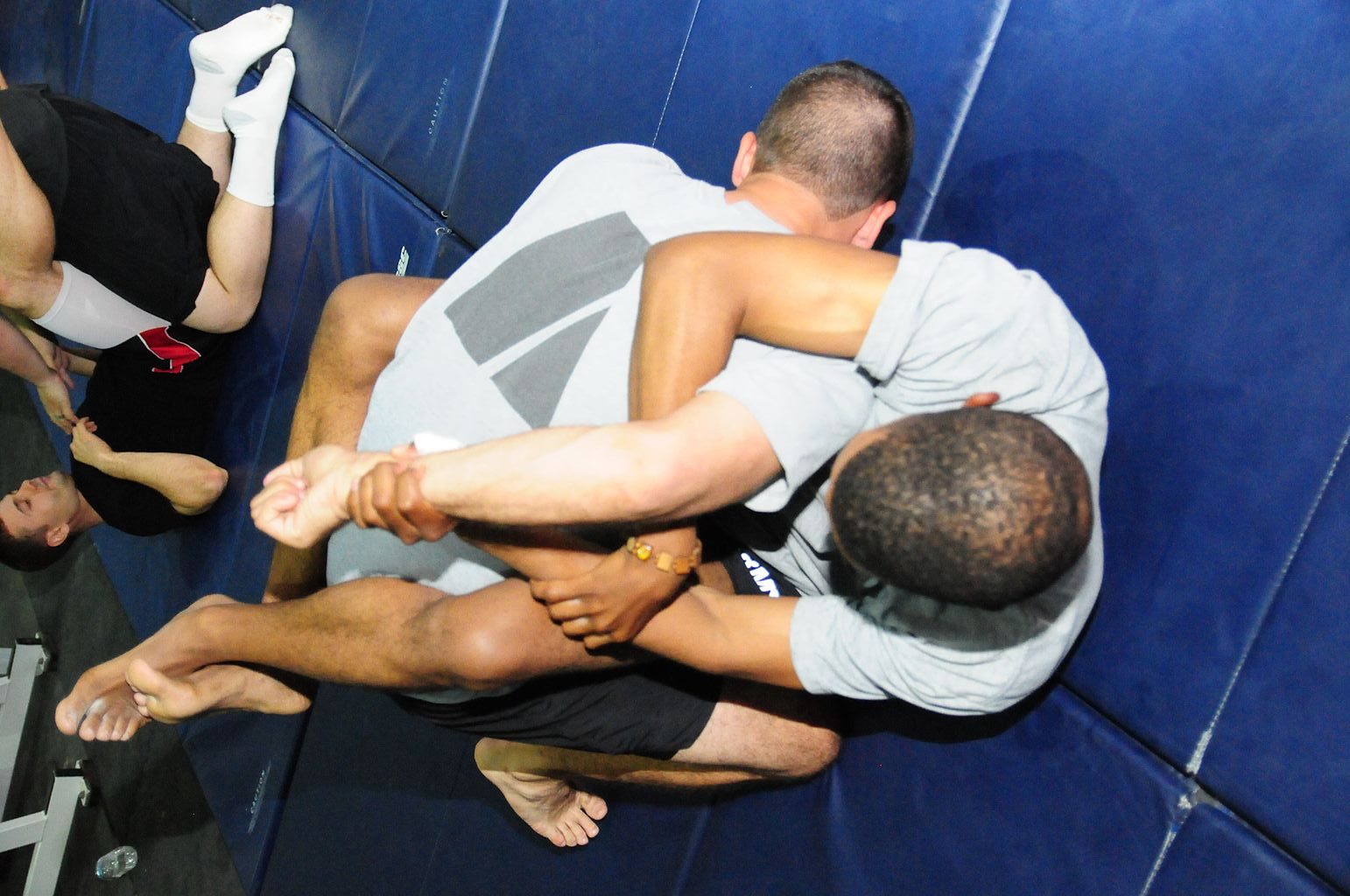
The Kimura is a submission hold commonly seen in mixed martial arts fights. This submission effects mainly the shoulder joint, but also to a lesser extent the elbow joint. When applied, this joint lock hyperrotates the shoulder causing intense pain and the tap out.
The name for this grappling technique comes from the great judo master Masahiko Kimura. Practitioners of Brazilian jiu jitsu gave the grappling technique that name after Masahiko Kimura used it to break Helio Gracie’s arm during a 1955 challenge match in Brazil.
There are two primary positions from which this submission hold is applied. The guard and side control. Both of these positions give the practitioner the leverage needed to apply the technique with power and get the tap. It is also very common for someone applying this submission technique from the side control position to step over the opponents head with the leg closest to the head. This gives even more leverage and power to the technique.
The kimura has been used on many occasions, by many fighters, to get the tap and end a fight. There are literally hundreds of examples of this submission hold being used in MMA fights. Some of the notable examples of it in mixed martial arts are: Kazushi Sakuraba using it to break Renzo Gracie’s arm in Pride 10, Fedor using it to tap Kevin Randleman in the 2004 Pride FC Heavyweight Grand Prix and Matt Hughes tapping Joe Riggs with the technique in UFC 56.
This submission grappling technique has been and will continue to be a favorite for many of the top MMA fighters in the world.





For the first video where he grabs onto the collar. What if they arent wearing anything and u cant grab onto a collar?
i noticed a lot of these submissions somehow involve grabbing clothing…what if there is no clothing to grab?
grab the side or top of the neck.
You can pull this off without a Gi, of course the strength of your hand grip and sweat will be a factor in this case.
To pull the opponent down you will need to grab the neck, then put your triceps on his back, control the wrist, and get the hold. Not having a Gi, you should wait for an opening and be ready execute it real fast to go for it cause if the opponent sees that coming he will quickly counter, resulting in a great waste of energy on your side if you insist, and you may end up tired and with no hold.
If your guard is REALLY tight you may get the tap even without scooting your hips on the side that far.
Plus you can also use it as a sweep that will put you in the mount (!!!) if the opponent is in your guard and in the side mount if he is in your side mount.
Or to defend from the rear naked choke when they got your back and your standing/kneeling (not when you’re flattened out) or as a throw when you’re wrestling on your feet.
One of my fovorites 😀
well mike they are doing regular Brazilian jiu jitsu moves witch involves clothing. If you were fighting with no clothing lets say like in the ufc then you’d have to modify the moves if possible.
this works great when you ahve side control, but like its shown its to easy to counter if the guy has any exp.-ben
for the closed gaurd what happens if they arent wearing a shirt? but it’s very effective from the side mount though
Been training in judo for about eight months already. I try to learn both gi and no gi techniques. Great website. Picking up a lot of great tips.
if youre in the closed guard and they aren’t wearing a shirt, it would work jsut as well if you grab the top of the neck or shoulder blade. as long as you have good control of the wrist than you should be able to manage.
I’ve seen this move more often used from the mounted position and the pressure seems to be placed on the forearm more than the shoulder.